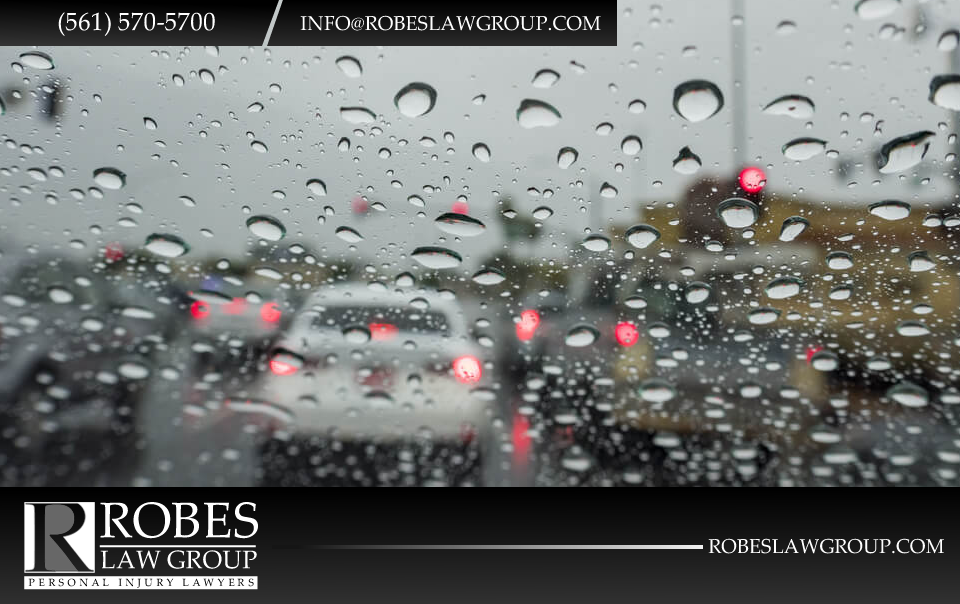Safety tips for driving in the rain

Although South Florida is known for its sunny weather, we do have occasional periods of heavy rain and rough weather which makes for dangerous driving. In short, rain reduces your visibility, response time, and ability to control your vehicle, which increases the risk of car accidents.
At Robes Law Group, we are dedicated to keeping the roads and highways safe for all motorists. Here are some important safety tips for driving in the rain:
- Check the Tires — Tire treads are designed to create road grip by forcing water, mud and other debris away from the tire contact point. Over time, tire tread wears down, making it more likely that the tires will slip or spin on wet surfaces. Although manufacturers have guidelines for when tires should be replaced, it is important to routinely inspect them for signs of wear, leaks, punctures and other damage.
- Inspect the Windshield Wipers — Properly functioning windshield wipers help to improve visibility in inclement weather. When wipe blades are grimy or worn out, streaks and wet patches can be left on the windshield. Wiper blades should be cleaned from time to time and replaced if they are worn, frayed or cracked. The motor and gears could also wear out with age as well.
- Don’t Use Cruise Control — Cruise control is only designed for long highway driving when the weather is dry. If it’s raining and the roads are wet, using cruise control is dangerous. Since this feature allows you to maintain a constant speed, your risk of hydroplaning increases dramatically because cruise control cannot detect water on the road. You should only drive in the rain with the vehicle under full manual control.
- Avoid Skidding/Hydroplaning — If you drive too quickly through puddles or ponding on the road, the tires will likely skim over the surface of the water and not make contact with the road. This causes the vehicle to hydroplane, making it hard to control. If your vehicle starts to hydroplane, keep both hands on the wheel, reduce your speed and gradually apply the brakes.
- Reduce Your Speed — When roads are wet and slick, your stopping distance greatly increases, as does the risk of a skid. Slow down in the rain — between 5 and 10 mph below the speed limit — and allow several car lengths with the driver ahead. It is also important to stay to the right, pass with caution, and always check the side view and rearview mirrors.
- Pull Over — In torrential downpours or when wind driven rain makes it hard to see the sides of the road, other vehicles or your surroundings, pull over to the side of the road cautiously and put your warning lights on. Wait it out until the rain lets up or until you feel comfortable proceeding.
The Takeaway
Although these tips for driving in the rain seem like common sense, some drivers fail to take precautions and make adjustments in inclement weather. Nonetheless, all drivers in the state have a duty of care to operate their vehicles in a safe manner and avoid causing injuries to others. This duty means that drivers must respond to weather conditions appropriately. If you have been injured in a bad weather car accident, you may still be entitled to significant compensation. Call Robes Law Group today at (561) 570-5700 or use link below to schedule a free case consultation.
